|
|
Bere Mill on the banks of the river Test at Whitchurch
in Hampshire was built in 1710 as a corn mill but in 1712 the
Huguenot Henri de Portal brought the skill of papermaking
to Whitchurch and took over the lease of the mill. The clear
water of the fast-flowing River Test, with its chalk component,
was very suitable for the production of good quality paper, and
the business thrived. In 1718 Portal leased Laverstoke Mill,
two miles upriver, and built a new paper mill on the site, which
became the main mill. In 1724 Henri Portal (as he now called
himself) was granted leave to produce paper for the notes issued
by the Bank of England and this paper was initially made from
Bere Mill. In his article for The Quarterly (July 1993)
Peter Bower quotes a member of the Portal family - In a chapter from Fire Insurance Policy Records (edited by L. Munby) there is mention of Hampshire's famous papermaker, Henry Portal, insuring his house, mill and outhouses in Laverstoke for £300 in 1719; eight years later insuring the same property plus storehouses and raghouses for £1,200; and in 1742 a third policy for £2,000 to include one other little papermill. These are very large sums for the time. |
|
|
The record of Martha's baptism has not yet been found but she is believed to have been the daughter of Edward Webb. Edward was the son of Philip and Alycia (in some records Alice) Webb. He was christened in Little Shelford in 1701. Philip (also of Little Shelford) and Alice (nee Heardman, of Great Shelford) had been married at Jesus College, Cambridge in January 1698, but Alice and at least two of their children died in the winter of 1714-15, perhaps from smallpox, so Edward was lucky to have survived.
Edward married Mary Farthing of Stapleford in 1729 and four of their children (but unfortunately not Martha) were christened at Stapleford. Whether or not he was engaged in paper manufacture is not known, but he was tenant of a cottage and a "shop" (workshop). He was also named as a member of the Court Leet in 1743. On the death of Edward, his will (dated 1762) shows that he had a daughter Martha to whom he left the sum of £60. Edward died in March 1764, two months before Martha's wedding to William Webb. When Martha's mother, Mary (nee Farthing), died in 1747, her son William inherited the copyhold messuage and pasture which she had inherited from her father William Farthing. As young William was a minor, his father Edward was appointed as custodian until he came of age. It is interesting that Martha's other brother, John, was mentioned in their father's will as being on his Majesty's Service. Later, a son of William and Martha was to enter the navy - (see Chapter 3). Was he following his uncle's example? |
|
|
Fairchild was apparently also a merchant and farmer, and among the later Webbs we will find examples of several occupations being pursued, and several businesses being run at one time. Fairchild did not make a success of the papermaking enterprise, and was declared bankrupt in 1779, having insured, among other things, two papermills for a sum not exceeding six hundred and seventy five pounds. When Borough Mill was subsequently put up for sale it included: "Two vatts lined with lead; two engines worked by separate water wheels; two water wheels 16 feet in diameter; eight iron screw presses; two chests lined with lead; a double range of drying lofts; a sizing room; a blueing room fitted with coppers; a rag house with lattices and bins." After changing hands several times, the mill was run from 1836 by the Towgood family and became one of the largest industrial concerns in the county. The Spicer brothers acquired the mill in 1917 and their business has international acclaim. |
|
Return to text |
Berrows Worcester Journal is the world's oldest surviving newspaper, continually published for over 300 years. It was established in 1690 and was widely available throughout the county, and indeed the country, as is the case today. |
|
|
In the same newspaper
for 1752: "To Be LETT, and enter'd upon immediately, a set of PAPER-MILLS, in the parish of Tardebigge, in (or near) the County of Worcester, in very good Repair; with several Acres of Meadow and Pasture Ground thereto belonging. Particulars whereof may be had of Mr John Cleverley, Steward to the Right Hon. The Earl of Plymouth, at his house at Hewell, in the said parish; or of him, on any Tuesday, at The Crown in Bromsgrove". |
|
|
Beoley is an ancient village
conveniently located on the old Roman road of Icknield (or Rykneild)
Street, just over two miles northeast of present-day Redditch.
The church of St Leonard, built about 1140, and nearby Mount
(which may have been an Iron Age hill fort) are situated half
a mile from the main village, which was also known as Holt End,
but it is not known when the supposed population shift took place.
The small Norman church had north and south aisles added during
the 13th century, no doubt to cater for an increase in population,
and the famous Sheldon Chapel was constructed in the 16th century. Most of the tapestries were manufactured at Barcheston and were often romanticised rather than accurate portrayals (for example, on one tapestry Stratford-on-Avon is shown as a walled town).some of these details are from Ralph Richardson's St Leonard's Church - a brief history and guide" published in 2002. |
|
Return to text |
William and Martha's fourth son Joseph must have been born around 1775, unless he later lied about his age. His christening record has not been found and on one document during his service in the navy he claims to have been born in Oxfordshire. Further information about Joseph and his career is contained in Chapter 3. |
|
|
Early Redditch depended largely on the Abbey of Bordesley, a Cistercian Abbey founded in 1138. At the time of the Dissolution of the Monasteries in 1538, Bordesley was the fifth wealthiest Cistercian Abbey in England and Wales. Then, on the orders of King Henry VIII, the monks were pensioned off and within weeks of the abandonment of the site the local people were already looting the stone for their own buildings! The Gatehouse Chapel of St Stephen survived, though in a poor state. In 1687 the parish of Tardebigge applied to the Earl of Plymouth, now the owner of the land, for permission to reinstate the chapel as a place of worship, and for use of the old burial ground. This was an improvement, as the parish church was still at Tardebigge , not exactly convenient for the populace of the neighbourhood of Bordesley, many of whom had by now moved up the hill to higher ground, and established a hamlet around what we now know as Church Green, Redditch. The chapel at Bordesley fell into disrepair once again and eventually, in 1807, the people of Redditch had a Chapel on the Green, but it was not the building we see today.For details of the history of St Stephen's click here. |
|
|
Redditch is not to be found at all on Kitchen's map of 1764, though it is on Beighton's map of Worcestershire in 1772, Tunnicliffe's map of 1788 and Nash's map of 1789. Speede's map of 1610 marks Beoley, Ipsley, Studley, Tardebigge and Hewell Grange, though the spellings are not as we know them. In 1776 Joseph Monk, a Primitive Methodist preacher described the hamlet of Redditch, from which local artist Norman Neasom has created a sketch to give an idea of the buildings and their inhabitants at that date. This sketch map can be viewed here, but may take a short time to download. John Nash, in his 'History of Worcestershire'
written around 1781, declares that Redditch was enclosed by Act
of Parliament in 1722. He tries to determine the bounds of the
parish by consulting the oldest inhabitants he can find. He mentions
a gospel oak on Redditch common, Easemore Wood, and the new
paper mill which is situated not far from the abbey orchards. |
|
|
Letters from John & Matthew Mills at Beoley papermill : February 10th 1787 - to Thomas
Bowles, stationer, Newgate Street, London: Further comments from similar
letters: May 18th 1787: June 14th 1787: September 1787: Other letters show that they had various customers in Birmingham in 1784 - Messers John Humphreys at Digbeth, Mr Bollman in Bull Street and Mr Shymer in Edmund Street. Perhaps William's son Edward (See Chapter 2), who also became a papermaker, met his future wife in Birmingham while on a business trip? It is certainly a possibility. |
|
|
Beoley mill and attached farms changed hands in 1826, and it is interesting to note what was offered for sale :
Another family closely connected with the papermill over several generations were the Parrs, who by 1819 had a growing family. Pigot's Directory of 1841 shows Thomas Parr at Beoley papermill, and he is also mentioned in 1851, manufacturing papers for wrapping needles and fish-hooks. The 1881 census shows Henry Parr at Beoley papermill, with his wife, 7 children and 2 servants. Henry employed 4 men, 4 women and 2 boys. By 1936 the Parr family business was also manufacturing photographic paper. The Parr family were well known to the Webbs over many years and several generations. The author remembers her father and grandfather having rulers advertising the Parr family business in the mid 20th century.
In 1835 Benjamin Sarsons, who figures later in the Webb family saga (see Chapter 9), is listed as a baker, flour dealer and maltster at Beoley Mill, (presumably not the papermill) though his residence was later at Church Green East, where his business was carried out on the corner of Peakman Street in the house later acquired by the Webb family. |
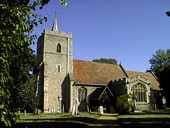 Great
Shelford church
Great
Shelford church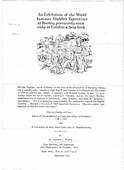
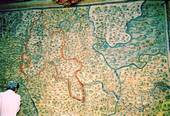
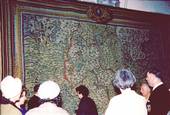
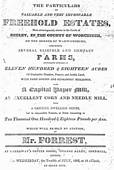
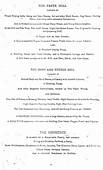
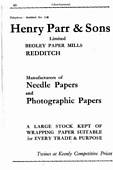 advert
in The Needlemakers Almanack 1934
advert
in The Needlemakers Almanack 1934